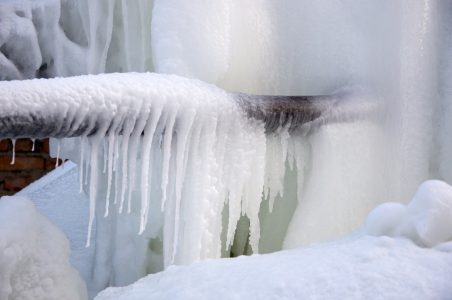Ways to Protect Your Pipes from Cold Weather: Professional Guidance
Ways to Protect Your Pipes from Cold Weather: Professional Guidance
Blog Article
Just how do you really feel when it comes to 6 Ways to Prevent Frozen Pipes?

Cold weather can damage your plumbing, particularly by freezing pipelines. Right here's how to stop it from happening and what to do if it does.
Intro
As temperature levels drop, the threat of frozen pipes boosts, potentially leading to expensive fixings and water damages. Comprehending just how to avoid icy pipes is critical for home owners in cold climates.
Understanding Icy Pipelines
What creates pipes to freeze?
Pipelines freeze when exposed to temperature levels listed below 32 ° F (0 ° C) for prolonged durations. As water inside the pipelines ices up, it increases, putting pressure on the pipeline walls and possibly creating them to rupture.
Threats and damages
Frozen pipelines can cause supply of water disruptions, building damage, and costly repair services. Ruptured pipes can flood homes and trigger extensive architectural damage.
Signs of Frozen Pipeline
Determining icy pipelines early can avoid them from breaking.
Exactly how to determine frozen pipes
Try to find lowered water flow from faucets, unusual smells or sounds from pipelines, and noticeable frost on subjected pipes.
Prevention Tips
Shielding vulnerable pipelines
Cover pipes in insulation sleeves or utilize warmth tape to shield them from freezing temperature levels. Concentrate on pipes in unheated or exterior areas of the home.
Heating methods
Maintain interior areas properly heated up, particularly areas with plumbing. Open cupboard doors to allow warm air to circulate around pipelines under sinks.
Shielding Outside Pipes
Garden hoses and outdoor taps
Disconnect and drain pipes garden hoses prior to winter months. Set up frost-proof spigots or cover outside faucets with shielded caps.
What to Do If Your Pipes Freeze
Immediate actions to take
If you think frozen pipelines, keep faucets open to alleviate stress as the ice melts. Make use of a hairdryer or towels soaked in hot water to thaw pipelines slowly.
Long-Term Solutions
Architectural changes
Think about rerouting pipes away from outside wall surfaces or unheated locations. Include added insulation to attic rooms, basements, and crawl spaces.
Upgrading insulation
Purchase premium insulation for pipelines, attics, and walls. Appropriate insulation assists keep regular temperatures and minimizes the threat of frozen pipes.
Conclusion
Protecting against icy pipelines calls for aggressive measures and fast actions. By comprehending the reasons, indicators, and safety nets, homeowners can shield their pipes throughout winter.
5 Ways to Prevent Frozen Pipes
Drain Outdoor Faucets and Disconnect Hoses
First, close the shut-off valve that controls the flow of water in the pipe to your outdoor faucet. Then, head outside to disconnect and drain your hose and open the outdoor faucet to allow the water to completely drain out of the line. Turn off the faucet when done. Finally, head back to the shut-off valve and drain the remaining water inside the pipe into a bucket or container. Additionally, if you have a home irrigation system, you should consider hiring an expert to clear the system of water each year.
Insulate Pipes
One of the best and most cost-effective methods for preventing frozen water pipes is to wrap your pipes with insulation. This is especially important for areas in your home that aren’t exposed to heat, such as an attic. We suggest using foam sleeves, which can typically be found at your local hardware store.
Keep Heat Running at 65
Your pipes are located inside your walls, and the temperature there is much colder than the rest of the house. To prevent your pipes from freezing, The Insurance Information Institute suggests that you keep your home heated to at least 65 degrees, even when traveling. You may want to invest in smart devices that can keep an eye on the temperature in your home while you’re away.
Leave Water Dripping
Moving water — even a small trickle — can prevent ice from forming inside your pipes. When freezing temps are imminent, start a drip of water from all faucets that serve exposed pipes. Leaving a few faucets running will also help relieve pressure inside the pipes and help prevent a rupture if the water inside freezes.
Open Cupboard Doors
Warm your kitchen and bathroom pipes by opening cupboards and vanities. You should also leave your interior doors ajar to help warm air circulate evenly throughout your home.

I'm very taken with Helpful Tips to Prevent Frozen Pipes this Winter and I hope you enjoyed the entire article. So long as you enjoyed reading our post plz don't forget to pass it around. Thanks for your time invested reading it.
Click Here Report this page